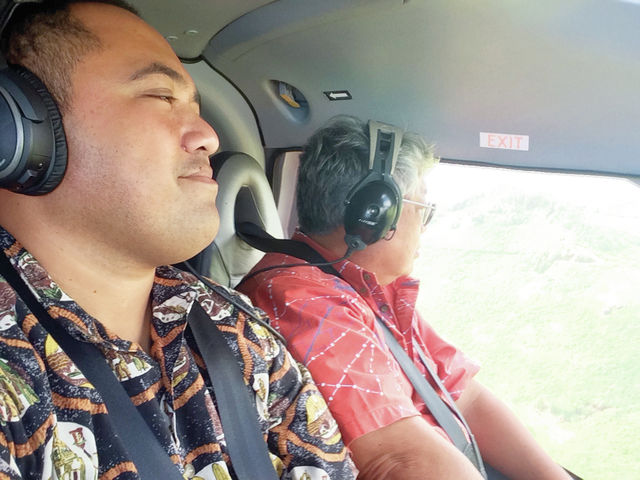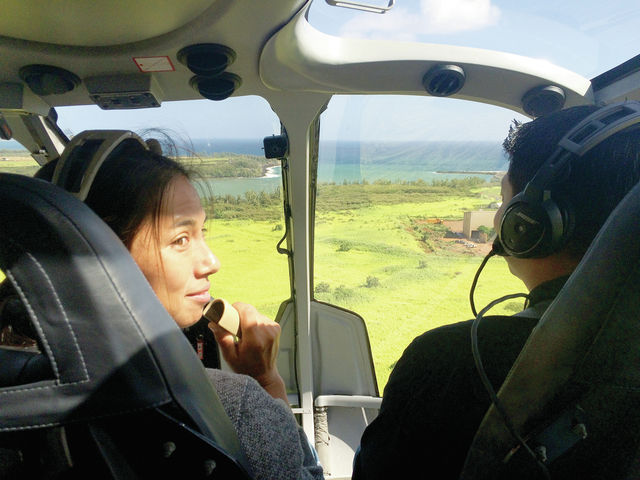LIHUE — Members of the Hawaii House of Representatives Finance Committee got a view of Kauai from the sky Wednesday to see projects that are funded, at least in part, by the Legislature. “We’re glad to be here,” said Sylvia
LIHUE — Members of the Hawaii House of Representatives Finance Committee got a view of Kauai from the sky Wednesday to see projects that are funded, at least in part, by the Legislature.
“We’re glad to be here,” said Sylvia Luke, chairwoman of the finance committee. “It’s important to visit the more rural islands and see what’s happening firsthand.”
The helicopter tour took representatives around the island. They looked at watershed protection projects in the Alakai, Wainiha, Hono O Na Pali, and Kokee fire restoration areas. For most of the committee members, it was their first air tour of Kauai.
“It gives you a whole different perspective being up in that helicopter,” said Jo Jordan, House Representative for District 44. “When they give you a piece of paper, or you’re looking at photographs, it’s not as real.”
Jordan said she saw several Albizia plants during the helicopter tour.
“They’re so big and you know that everything under those leaves is dead,” Jordan said. “It’s a problem and you get kind of the whole picture when you see it from the air.”
The day kicked off with briefings from several agencies.
“We’re focused on protecting the core of the watershed here on the island,” said Trae Menard, coordinator for the Kauai Watershed Alliance, “that area that captured the most rain, and try to protect that so we can optimize the amount of water that’s provided.”
Invasive plants and animals are big threats to Kauai’s watershed. Unchecked populations of ungulates, or animals with hooves like wild pigs, deer and goats, can clear hillsides of vegetation and tear up the ground when they are rooting. That can cause a rapid rate of erosion and lower the amount of water that makes its way into the aquifers.
In order to curb ungulate populations in watershed areas, the Department of Land and Natural Resources is fencing off units of land, most of them several thousand acres in size, and removing all of the animals.
“So the goal is to get the population to zero in the watershed areas,” Menard said. “First we fence off the area, then we eliminate the population, then we monitor and maintain the area.”
When it comes to invasive plants, however, a different approach has to be taken.
“We can’t just spray in a lot of these areas because of all the water, so we’re clearing them manually,” said Mapuana O’Sullivan, natural area reserves system specialist with the Department of Land and Natural Resources. “It takes a lot of work and time.”
Albizia and African tree ferns were two of the invasive species highlighted during the helicopter tour. Both are strikingly similar to native plants, but grow faster and choke out their neighbors.
“Most of the invasive species came to the island as ornamental plants,” said O’Sullivan. “Someone thinks they’re pretty, so they put them at their cabin, but soon they’re all over the place.”
Emma Yuen, natural area reserves system planner with the DLNR, said the morning’s session on the watershed and invasive species on Kauai was productive, and representatives got their questions answered.
“It’s always good to get the word out about our watershed,” Yuen said. “A lot of people aren’t aware of the need to protect watershed areas.”




